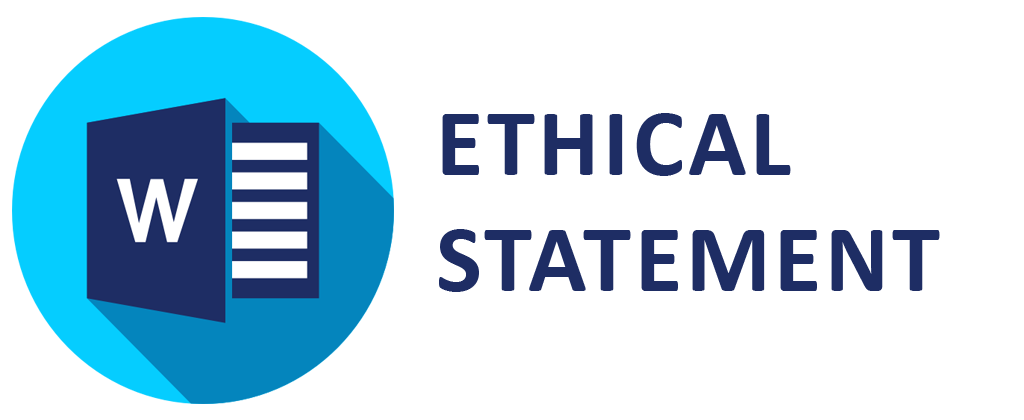Measuring Indonesian Cocoa Agroindustry Competitiveness from a Global Value Chain Perspective
Pengukuran Daya Saing Agroindustri Kakao Indonesia dari Perspektif Rantai Nilai Global
DOI:
https://doi.org/10.55981/bilp.2023.978Keywords:
Competitiveness, Global Value Chain, Indonesian Cocoa Product, Revealed Comparative Advantage, Trade Specialization IndexAbstract
Indonesian cocoa products in international trade face challenges in quality, food safety, and environmental requirements. Developing the cocoa agro-industry is essential to meet those global demands. The research aims to analyze the competitiveness of business in Indonesian cocoa products using the Global Value Chain (GVC), Revealed Comparative Advantage (RCA), and Trade Specialization Index (TSI) methodology. Research data uses the time series of Indonesian cocoa product export trade from 2001-2020. From a GVC perspective, the diversity of cocoa product exporters and the same competition drive a significant increase in competitiveness. Market access opportunities and regulatory support will encourage domestic industrial growth by utilizing efficient supply chains and making Indonesia part of the global production network. Cocoa products require economic value, from dry beans to ready-to-consume products. They are improving farmer’s bargaining position towards agro-industry institutions and better stakeholder coordination. The results of RCA show the comparative advantage of Indonesia cocoa exporters for HS code products 1801, 1802, 1803, 1804, and 1805 in the international market. The stages of identification of Indonesian cocoa products are the maturity stage for cocoa beans, the commercial maturity stage for cocoa paste and butter products, and the growth stage for cocoa product powder.
Downloads
References
Anderer, C., Dür, A., & Lechner, L. (2020). Trade policy in a “GVC World”: Multinational corporations and trade liberalization. Business and Politics, 22(4), 639–666. https://doi.org/10.1017/bap.2020.4.
Ariyanti, M. (2017). Karakteristik mutu biji kakao (Theobroma Cacao L) dengan perlakuan waktu fermentasi berdasar SNI 2323-2008.(Quality characteristics of cocoabeans (Theobroma Cacao L) withtime fermentation treatment based on ISO 2323-2008). Jurnal Industri Hasil Perkebunan, 12(1), 34–42. http://dx.doi.org/10.33104/jihp.v12i1.2757.
Balassa, B. (1965). Trade liberalisation and “revealed” comparative advantage. The Manchester School, 33(2), 99–123. https://doi.org/10.1111/j.1467-9957.1965.tb00050.x.
Budiarti, W., & Anggraeni, D. A. (2023). Analisis revealed comparative advantage dan export product dynamic komoditas lada Indonesia dan Vietnam. Buletin Ilmiah Litbang Perdagangan, 17(1). 111-132. https://doi.org/10.55981/bilp.2023.26.
Chopra, S., & Meindl, P. (2013). Supply chain management: strategy, planning, and operation (Fifth Edit). Prentice Hall. https://doi.org/10.1017/CBO9781107415324.004.
De Marchi, V., Di Maria, E., & Ponte, S. (2014). Multinational firms and the management of global networks: Insights from global value chain studies. In Orchestration of the global network organization, 27, 463–486. https://doi.org/10.1108/S1571-502720140000027009.
Ermawati, T., & Saptia, Y. (2013). Kinerja ekspor minyak kelapa sawit Indonesia. Buletin Ilmiah Litbang Perdagangan, 7(2), 129–148. https://doi.org/10.30908/bilp.v7i2.104
Ernita, Y., & Ampuh Hadi Guna, R. (2017). Analysis of cocoa industry development factor with system approach in West Sumatera, Indonesia. International Journal of Sciences: Basic and Applied Research (IJSBAR), 36(3), 122–133. http://gssrr.org/index.php?journal=JournalOfBasicAndApplied.
Fadillah, A., Indrawan, D., & Achsani, N. A. (2019). Indonesian coffee in the global value chain: The comparison of global partnership sustainability standards implementation. Jurnal Manajemen & Agribisnis, 16(2), 191. https://doi.org/10.17358/jma.16.2.191.
Faisal, I. A. (2019). Respon Indonesia terkait kebijakan tariff dari Uni Eropa dalam studi kasus produk kakao. eJournal Ilmu Hubungan Internasional, 2019, 7(3): 1179-1188. https://ejournal.hi.fisip-unmul.ac.id/.
Fernandez-Stark, K., Frederick, S., & Gereffi, G. (2011). The apparel global value chain. Duke Center on Globalization, Governance & Competitiveness. https://www.unido.org/sites/default/files/2009-12/Global_apparel_value_chain_0.pdf.
Fernandez-Stark, K., & Gereffi, G. (2019). Global value chain analysis: A primer. In Handbook on global value chains. Edward Elgar Publishing. https://doi.org/10.1017/9781108559423.012.
Fowler, M. S., & Coutel, F. (2017). Cocoa beans: from tree to factory. Beckett’s Industrial Chocolate Manufacture and Use, 9–49. https://doi.org/10.1002/9781444301588.ch2
Gereffi, G., & Fernandez-Stark, K. (2016). Global value chain analysis: a primer (2nd edition). Retrieved from https://hdl.handle.net/10161/12488.
Goni, J., & Kadarusman, Y. (2015). Local company contribution within global value chain: a case study in the Indonesian footwear industry. Mediterranean Journal of Social Sciences, 6(6 S5), 444. https://doi.org/10.5901/mjss.2015.v6n6s5p444.
Hanafi, R. U., & Tinaprilla, N. (2017). Daya saing komoditas kakao Indonesia di perdagangan internasional. Forum Agribisnis, 7(1), 1–20. https://doi.org/10.29244/fagb.7.1.1-20
Hidayat, A. S., & Siradj, M. (2015). Sertifikasi halal dan sertifikasi non halal pada produk pangan industri. AHKAM: Jurnal Ilmu Syariah, 15(2). https://doi.org/10.15408/ajis.v15i2.2864.
Hubacek, K., Guan, D., & Barua, A. (2007). Changing lifestyles and consumption patterns in developing countries: A scenario analysis for China and India. Futures, 39(9), 1084–1096. https://doi.org/https://doi.org/10.1016/j.futures.2007.03.010.
ICCO. (2021). Quartely bulletin of cocoa statistics, cocoa yearr 2020/2021 (https://www.icco.org/wp-content/uploads/Production). https://www.icco.org/%0Ahttps://www.icco.org/wp-content/uploads/Production_QBCS-XLVII-No.-2.pdf.
Kadarusman, Y., & Nadvi, K. (2016). Competitiveness and technological upgrading in global value chains: Evidence from the Indonesian electronics and garment sectors. European Planning Studies, 21(7), 1007-1028. https://doi.org/ 0.1080/09654313.2013.733850.
Kemenperin. (2015). Rencana induk pembangunan industri nasional 2015-2035. 1–98. https://www.kemenperin.go.id/ripin.pdf.
Krugman, P. (1980). Scale economies, product differentiation, and the pattern of trade. The American Economic Review, 70(5), 950–959. https://www.jstor.org/stable/1805774.
Lestari, N. A. (2017). Kerjasama indonesia-Jepang dalam sektor agribisnis (studi kasus: ekspor kakao indonesia ke jepang). Jurnal Online Mahasiswa (JOM) Bidang Ilmu Sosial Dan Ilmu Politik, 4(2), 1–13. https://jom.unri.ac.id/index.php/JOMFSIP/article/view/14509.
Li, X., Meng, B., & Wang, Z. (2019). Recent patterns of global production and GVC participation. Global Value Chain Development Report, 2019, 9. https://www.wto.org/english/res_e/booksp_e/gvc_dev_report_2019_e_ch1.pdf.
Mithöfer, D., Roshetko, J. M., Donovan, J. A., Nathalie, E., Robiglio, V., Wau, D., Sonwa, D. J., & Blare, T. (2017). Unpacking ‘sustainable’ cocoa: do sustainability standards, development projects and policies address producer concerns in Indonesia, Cameroon and Peru?. International Journal of Biodiversity Science, Ecosystem Services and Management, 13(1), 444–469. https://doi.org/10.1080/21513732.2018.1432691.
Nabhani, I., Daryanto, A., Yassin, M., & Rifin, A. (2015). Can Indonesia cocoa farmers get benefit on global value chain inclusion? A literature review. Asian Social Science, 11(18), 288. https://doi.org/ 10.5539/ass.v11n18p288.
Nugroho, M. I. (2022). Global value chains participation to enhance export: Evidence from Indonesian apparel SMEs. Journal of Socioeconomics and Development, 5(1), 99–114. https://doi.org/10.31328/jsed.v5i1.3499.
Nussy, V. J. M., Azijah, Z., & Amalia, S. (2022). Covid-19 and Indonesian agroindustry sector export performance: Input-output analysis approach. Jurnal Ekonomi Dan Kebijakan Pembangunan, 11(1), 56–74. https://doi.org/10.29244/jekp.11.1.2022.56-74
Prasada, I. Y., & Dhamira, A. (2021). The competitiveness of natural rubber by exporting countries in the global market. E3S Web of Conferences, 305, 2006.
https://doi.org/10.1051/e3sconf/202130502006.
Rodrigue, J. (2012). The geography of global supply chains: Evidence from third‐party logistics. Journal of Supply Chain Management, 48(3), 15–23. https://doi.org/10.1111/j.1745-493X.2012.03268.x.
Serin, V., & Civan, A. (2008). Revealed comparative advantage and competitiveness: A case study for Turkey towards the EU. Journal of Economic and Social Research, 10(2), 25–41. https://www.academia.edu/3377058/Revealed_Comparative_Advantage_and_Competitiveness_A_case_study_for_Turkey_towards_the_EU.
Somashekhar, I. C., Raju, J. K., & Patil, H. (2014). Agriculture supply chain management : A scenario in India. The International Journal Research Publication’s, 04(07), 89–99. https://www.researchgate.net/publication/268280558_Agriculture_Supply_Chain_Management_A_Scenario_in_India.
Syahruddin, N., & Kalchschmidt, M. (2012). Traceability in the cocoa supply chain : An Indonesian context. 23rd Annual Conference of the Production and Operations Management Society, 1–17. http://www.food.gov.uk/enforcement/alerts/2006/jun/cadburychoc;
Tien, N. H., Anh, D. B. H., & Thuc, T. D. (2019). Global supply chain and logistics management. Dehli: Academic Publications.
Vicol, M., Neilson, J., Hartatri, D. F. S., & Cooper, P. (2018a). Upgrading for whom? Relationship coffee, value chain interventions and rural development in Indonesia. World Development, 110, 26–37. https://doi.org/10.1016/j.worlddev.2018.05.020.
Vicol, M., Neilson, J., Hartatri, D. F. S., & Cooper, P. (2018b). Upgrading for whom? Relationship coffee, value chain interventions and rural development in Indonesia. World Development, 110, 26–37. https://doi.org/10.1016/j.worlddev.2018.05.020.
Vollrath, T. L. (1991). A theoretical evaluation of alternative trade intensity measures of revealed comparative advantage. Weltwirtschaftliches Archiv, 127(2), 265–280. https://www.jstor.org/stable/40439943.
Wahyunadi, W., & Akung, D. (2012). Mengurai model kesejahteraan petani. Jurnal Ekonomi Dan Kebijakan (JEJAK), 5(1), 90-102. https://journal.unnes.ac.id/nju/index.php/jejak/article/view/4633/3846.
Wellyanti, B. (2015). Keunggulan komparatif Indonesia pada sepuluh komoditi unggulan ASEAN tahun 1997-2009. Jurnal Ekonomi Kuantitatif Terapan, 8(1), 92-99. https://doi.org/10.24843/JEKT.2015.v08.i01.p10.
Wijaya, W. A., & Rahayu, W. P. (2014). Pemenuhan regulasi pelabelan produk industri rumah tangga pangan (IRTP) di Bogor. Jurnal Mutu Pangan: Indonesian Journal of Food Quality, 1(1), 65–73. https://journal.ipb.ac.id/index.php/jmpi/article/view/19859.
Downloads
Published
How to Cite
Issue
Section
License
Copyright (c) 2023 Dianawati Dianawati, Nastiti S.I., Andes Ismayana, Taufik Djatna, Indah Yuliasih

This work is licensed under a Creative Commons Attribution-ShareAlike 4.0 International License.




 Buletin Ilmiah Litbang Perdagangan
Buletin Ilmiah Litbang Perdagangan